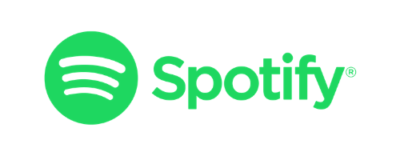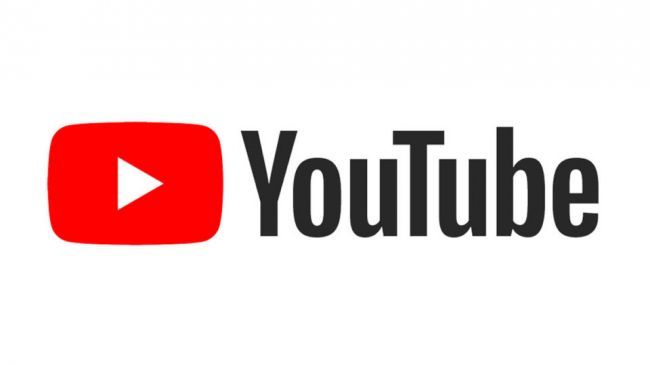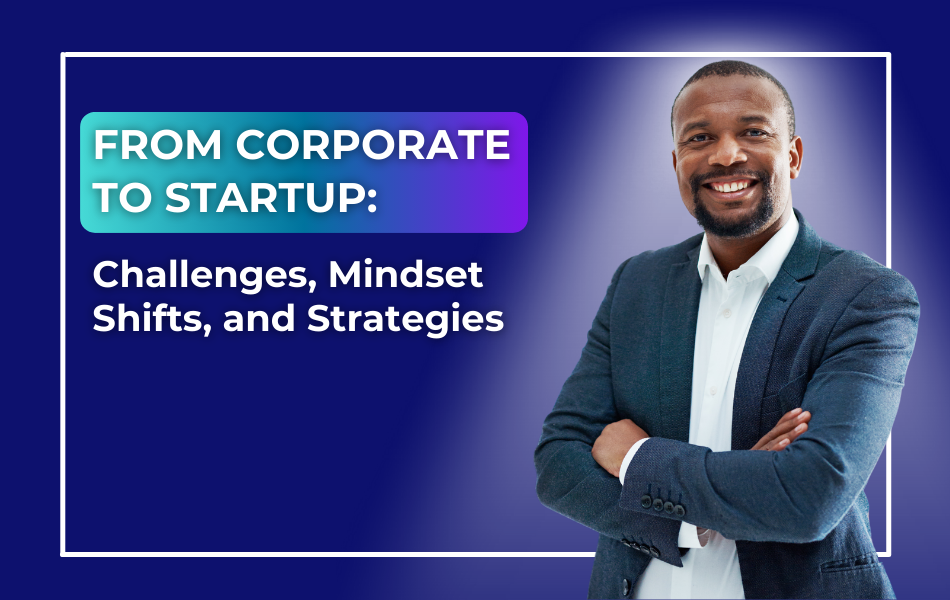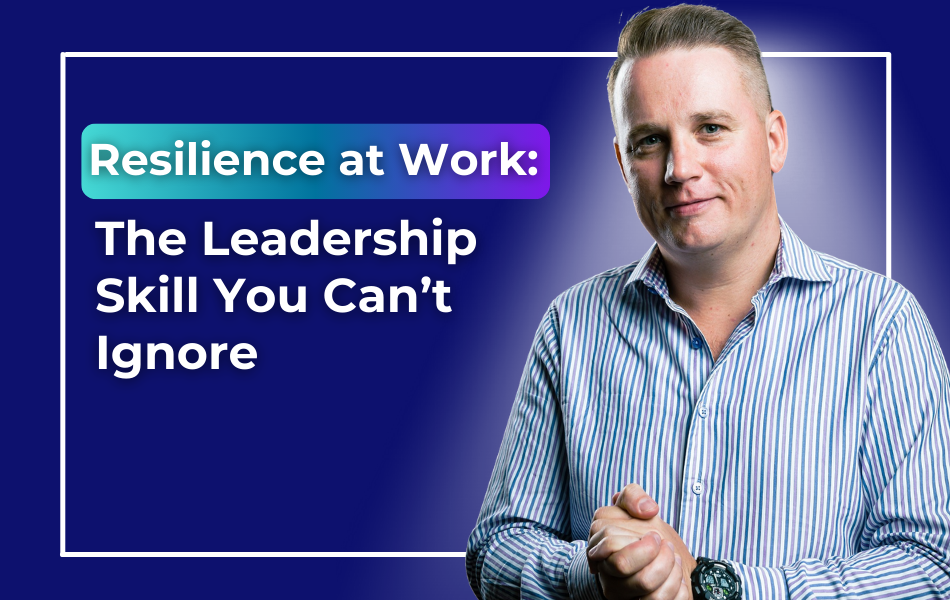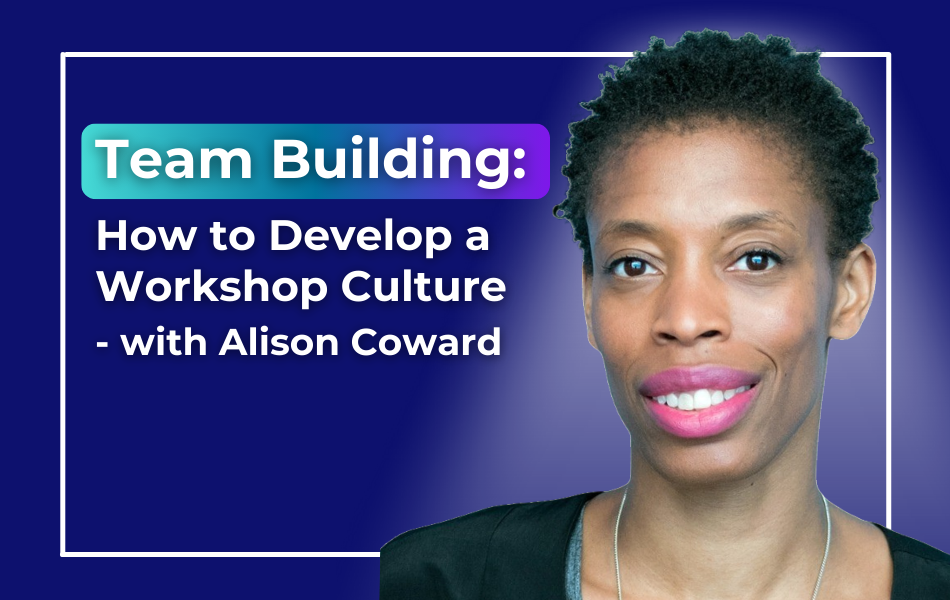
205. Elevating Your Communication Skills with GenAI
About this Podcast
Ep. 205 – GenAI isn’t a trend or a fad that will eventually fade. It is crucial for leaders to not only understand it but also be involved in conversations and early initiatives regarding GenAI’s use in their workplace.
But now, let’s get a bit more tactical.
GenAI is impacting business strategies, workflows, and employee productivity. However, leaders can also leverage it to improve communication with their teams, prepare for difficult conversations, or fine-tune their pitches and updates to senior leaders.
In this episode, Ramona provides several practical examples of how managers can use these new tools to navigate day-to-day conversations, prepare for more delicate situations, and improve all aspects of their communication.
If you’re looking for ways to stay at the forefront of GenAI and master tools like ChatGPT, Claude, or Gemini, to refine your communication techniques then this episode is for you.
Watch the YouTube video here.
Episode 205 Transcript:
0:00:00 Ramona Shaw: This is episode 205 on elevating your communication skills with Gen AI. Let’s dive in.
0:00:06 Ramona Shaw: Here’s the question. How do you successfully transition into your first official leadership role, build the confidence and competence to lead your team successfully, and establish yourself as a respected and trusted leader across the organization? That’s the question, and this show provides the answers. Welcome to The Manager Track podcast. I’m your host, Ramona Shah, and I’m on a mission to create workplaces where work is not seen as a source of stress and dread, but as a of contribution, connection, and fulfillment.
0:00:34 Ramona Shaw: And this transition starts with developing a new generation of leaders who know how to lead so everyone wins and grows. In the show, you’ll learn how to think, communicate, and act as the confident and competent leader you know you can.
0:00:48 Ramona Shaw: Be welcome to The Manager Track podcast. If you’ve been a listener for a while, then you know that I will weave in these conversations around Gen AI into the regular schedule of the podcast. Not just for fun or because it’s a hot topic, but really because I believe that workplaces will pretty significantly transform and be impacted by AI and Gen AI specifically. And as leaders. There’s just no way around then to become AI literate, to get the ball rolling for yourself, to get on that train, learn as much as you can, understand what’s going on, and get yourself into these conversations as soon as possible.
0:01:30 Ramona Shaw: There will be, in my opinion, and we will all see how this plays out, obviously. But based on understanding the developments and the conversations that many of the organizations are having and just how fast the developments are, there are going to be job cuts. It’s just inevitable. And the skills that will be most in demand are already today will be AI literacy, AI skills and understanding, how to navigate these conversations, how to use AI for whatever role you’re doing, and to position yourself as a leader who can speak to the topic, who can present ideas, and who can execute pilots and initiatives well.
0:02:16 Ramona Shaw: So this conversation, though today, is really about your own benefits. I want to talk about how to get sort of in the pool, jump in there with Gen AI in order to become more effective as a communicator. Now upfront, I want to say one thing, and I recently posted on this topic on social media too. This is really important to recognize when we overuse Gen AI or specifically, I’m talking about Chat GPT or Claude or Gemini or whatever chatbot or underlying LLM that you’re using.
0:02:51 Ramona Shaw: If you are overdoing it and you’re not bringing that human side back into the output, or then what you’re producing, it will likely lead to an erosion of trust from your team. So while all these tools will make you more productive and will help you deliver more effectively and communicate better, which we’ll get to here, if you lean too far into it and you’re taking shortcuts, the likelihood that it will backfire is really high.
0:03:21 Ramona Shaw: So I want to help you understand how to communicate effectively, but then also give you some guiding principles to make sure that you benefit from all the upsides and you mitigate potential downsides. That is the risk that you’re eroding trust, because people will recognize, well, this was just an answer from chat GPT, and there was no thought behind it, no personalization behind it, or really anyone could have come up with it. It doesn’t speak to your own credibility, your expertise, your thought leadership at all. It’s straight off the shelf, and we don’t want that. It’s not helping any professional, but specifically not leaders.
0:03:56 Ramona Shaw: So let’s get into it. Imagine a scenario where you might be a project manager, say, at a startup, and you are struggling, or you’ve gotten feedback that your communication is too verbose or is confusing at times, or unclear. You might have lengthy emails that people don’t want to read, or during meetings. You might get off track or you’re taking up too much time where there’s not enough time for your team members or your stakeholders or co workers to chime in and you’re recognizing at that moment. Okay, great.
0:04:28 Ramona Shaw: I need to get better at communicating for you. Even if you haven’t received such feedback, you might recognize in order to elevate as a leader, I need to be more brief, more concise, more impactful. I need to be more proactive with my communication. I need to be just do and communicate more, especially if you have remote or hybrid team members or people in other locations, or even if you’re working globally and you deal with other cultures where there’s also the cultural barrier. So anytime you recognize, improving my communication skills could be helpful.
0:05:04 Ramona Shaw: Chat GPT or clot again, any of those tools will assist you on your learning journey. I’m going to give you a handful of very tactical, concrete examples on how you can use it. Briefly, on the tools that you use. You’ve probably heard Chat GPT the most Chat GPT currently as of date of recording version four, which you have to pay for, produces significantly better results than version 3.5, which is for free.
0:05:33 Ramona Shaw: The same is true for clot. So the clot version three, the pro model, currently equivalent to a Chat GPT four in most of the performance metrics, but that also costs, it’s about $20 each per month, but that money is worth it if your company doesn’t give you access or tools where you can access Chat GPT through sort of an intermediary tool, or you have Gemini through your copilot, Microsoft. Sweet. If you don’t have access to any of those advanced models, buy your own subscription.
0:06:12 Ramona Shaw: Choose chat GPT or Claude. I used to think chat GPT four was better than Claude. Now with the latest release, I’m actually testing both, and I think they’re both about the same. Claude is slightly better with non english languages or responses data. Do your own research, but choose one of them. Get your own subscription. That’s one of those investments you’re going to make in your future career. Okay, enough about that. Choose whatever tool you want to use, and then let’s talk about specific use cases. So one would be to draft or to refine messages.
0:06:46 Ramona Shaw: And this comes from, we talk about reports that you might write. It could be emails that you’re writing, it could be slide decks, it could be a memoir, anything really, that you have to write in terms of content creation or messaging. You’ll go into one of those tools and you either ask it to draft it or to outline it, and then you’ll edit it or you outline it. Or you take an existing draft that may already be in your repository, or you already have as sort of a standard template, and then you ask it to either make it shorter, make it more clear, increase readability, check it for grammar, change the tonality, you know, change the sentiment, may make it more enthusiastic, or make it more professional sounding or more casual, or add some humor.
0:07:36 Ramona Shaw: Use the tool to change up what you have or to draft something. Most of you listening like, okay, thanks, Ramona. I’ve already done that many times. Okay, so that’s sort of the basic thing to do. The next thing, though, with drafting messages and reports or memos or communications that you have prepared, is that you could put it in and you could let one of those tools critique it. Now, when you let it critique it, you want to tell the tool what kind of role they should play.
0:08:06 Ramona Shaw: For example, you may say, I am presenting to the board or to the executive team. The executive team main purpose is to assess the cost efficiency of the project or the timelines they’re most interested in, how much it costs. Critique my memo on these factors and present me with opportunities to make it better or more effective. So give it a roll and ask for specific ways to critique what you already wrote, and then these tools will come back and will give you suggestions on how to make your communication stronger.
0:08:46 Ramona Shaw: Then take that feedback and go back to work and edit. You do the editing. Edit your memoir report, or whatever that may be in the show notes here we will link to our Gen AI Quick Start guide for leaders. And in there, I talk specifically about how to structure your prompts, those things that you drop into the chat box to ask for a response so that you get the best responses out of it. If you’ve tried those tools and you think their responses are not useful, it’s probably because the instructions that you’re giving it, the prompts that you’re writing, aren’t specific enough.
0:09:23 Ramona Shaw: Another way that you could use it is to give it some kind of text that you already have or something that you want to present, and then ask for an analogy or a metaphor. Analogies and metaphors are really strong communication tools, just like storytelling is in order for your message to land. So if you ask, if you drop that message in there, you can even say, find an analogy to airplanes or to dog training or to gardening or whatever you think that audience cares about, or a specific stakeholder cares about, or something that you’re familiar with or that resonates with the people that you’re working with.
0:10:03 Ramona Shaw: Use that specific topic and elevate your communication that way. You may also drop something in there and then say this report or this presentation specifically geared towards an audience. With XYZ background, you could talk about where they live, what positions or roles that they have, what industries that they’re in. You could ask about cultural differences, the model, and then request for the model, the tool to give you feedback on how to optimize your communication.
0:10:36 Ramona Shaw: Considering these factors, if you’ve done any communication skill trainings, you know who is your audience? It’s one of those big questions you got to ask and then tailor your message to that audience. And this is one way Chat GPT, Claude or Gemini can help you do this very quickly and very easily. You can also say, what objections might the audience have? After reading my proposal or after hearing this, what questions might come up so that you’re better prepared? As a caring and driven manager, I know you want to strengthen your leadership skills, advance your career, and lead a high performing, engaged team.
0:11:21 Ramona Shaw: And in order to do that, as a leader, you need to lead with a system, not by shooting from your hips or reacting to everyone else around you. To do so, you need to first learn what should go into your leadership system and second, develop your own. But here’s the good news. I created a concise, actionable, and yet comprehensive course on one component of the leadership system, and this is about how to successfully run one on one meetings with your direct reports.
0:11:50 Ramona Shaw: It includes over 67 minutes of tactical leadership training, plus a set of resources to make this as easy and immediately applicable for you as possible. You can get your hands on this course, which I want every single manager to have for a nominal $19 at ramonashaw.com one one. That’s two times the number one. You can check the show notes for the details or head on over to ramonajaw.com one one and get started right away.
0:12:23 Ramona Shaw: So what I just talked about is this big bucket of making your communication stronger, even, either by helping you drafting it. That’s one part, maybe 10% of the whole bucket, and the other 90% is about helping you make what you already have better by either personalizing it, customizing it, changing the sentiment or tonality of the communication, making it more concise, adapting it to specific audiences or personality styles or interests, including an analogy or a metaphor that fits well with the topic, anticipating objections and addressing them in your communication already so that those objections don’t even come up at the end of it.
0:13:05 Ramona Shaw: That is all work that these tools can help you with. Now, another way to use these tools would be to summarize information, to recap meetings, or to prepare agendas. When you are in charge of a meeting and you might say, hey, we have five topics we want to talk about. But not everyone’s going to know an equal amount about each of those projects or each of those milestones or tasks that will be part of the agenda.
0:13:36 Ramona Shaw: Or they may know it. But if you’re talking to senior leaders who have a million things going on at the same time, they appreciate a quick reminder, what is this about? They have to context switch all the time, and it’s really helpful for them to get a quick sentence or two on the topic, high level before diving into it. So use the information that you have or what you want to talk about in your meetings.
0:14:02 Ramona Shaw: Create agendas, or create brief summaries of what you’re going to talk about, or even underlying questions you want to address, which those tools, Chat GPT and the like, can help you come up with as well, and then share that upfront. If you’re recording information, if you’re recording meetings and you’re using, let’s say, zoom or teams, and there’s usually built in tools that will help you summarize the meeting. If not, there’s plenty out there that will take the recording and then create a summary that you can email out to the attendees, including a recap of all the tasks and deadlines that people have committed to during the call.
0:14:43 Ramona Shaw: So use these tools also for meetings and becoming really good at meeting management. The proactive part of communicating about it and the reactive part after the fact to recap meetings and get the ball rolling on the topics you talked about. Now, there’s a big thing about data privacy when it comes to these tools, so be mindful. If you don’t know what the AI policy is in your organization and what you can upload and not upload to any of these tools, you should check and then make sure that you’re not uploading confidential information or sensitive information about your business. Because whatever you feed these tools will then be part of those tools. So be careful about that and check with your company first. Now, two more ways and how these tools can help you.
0:15:29 Ramona Shaw: One is it can help you take data or information and put them into frameworks. Let’s say you need to make a decision on whether or not you want to use and integrate a new accounting software. You may present this information with the pros and the cons, but you could also then give all this information to Chat GPT and say, present this information in three different decision making frameworks. And Chat GPT will look at common decision making frameworks, present that framework to you, and then take all the information from whatever you’ve uploaded and fill it into those frameworks. So it will give you a way to present data or information differently.
0:16:18 Ramona Shaw: Oftentimes we have sort of learned throughout our careers a certain way to communicate something. Some of it is just personal, some of it is company driven, or we have a leader who does it a certain way and we just adapt. That Chat GPT will give you alternative options, and it helps to think a little bit differently. It helps to challenge our own thinking or approach to get better, to see, oh, are there actually other decision making frameworks or other aspects of a decision that I have not yet considered with the way that I’ve been going about it?
0:16:49 Ramona Shaw: So that’s one, using frameworks and then the last one here that for many people that I work with seems a bit awkward, but can be very, very helpful. And that is role playing. You can ask these tools to roleplay with you. So if you have a difficult conversation to have that you’re preparing for, or difficult news to share, or you need to give feedback to someone, you can literally say, role play this scenario with me.
0:17:16 Ramona Shaw: Pretend like you are my employee, I’m your manager. Here is the situation and we’re having. You can tell it to challenge you, and then you can also ask at the end of it, give me feedback on my performance and what I can do better and what I could do better. And Chat GPT can engage with you in this role play, which can be very effective in preparing for the conversation because you’ve already said it, you recognize what someone else may respond and you’re being way more prepared.
0:17:48 Ramona Shaw: Plus, the tools will give you some suggestions and feedback at the end of it, which again, helps you learn and become a stronger communicator. So as I was preparing for this podcast episode, the ideas just kept coming, like, oh, we could use it this way and that way. And I was thinking about all the different ways that I’ve used these tools in the past or that I can see how managers can use them to their benefit. The list is really long, and there are probably twice as many opportunities inside your organization, specifically to the tasks that you have to do and your job responsibilities that we haven’t even touched on.
0:18:24 Ramona Shaw: But everything that I’ve shared so far here are all ideas that apply to 99% of managers, because it’s all stuff that we all have to do, all that we all have to do. And as part of a management role, if you haven’t experimented with any of this yet, or there’s certain things that I said that you thought, oh, I’ve never done that. Even if you’re not going to actually use it afterwards, I highly encourage you to at least practice it, to at least try, to at least try it out to see, yeah, interesting. What would come of it?
0:18:58 Ramona Shaw: In which ways can I leverage this? Every time I have conversations with leaders about their use of chin AI, we usually start off very high level of, okay, what have you done so far and how have you used it? And they give me a few scenarios, and then we drill deeper into it and we talk about more and more scenarios that they can use it. And all of a sudden in the conversation, you can see the lights go on. And the more that they get into it, the more opportunities they see.
0:19:31 Ramona Shaw: All of a sudden they’re typing something, they’re seeing the answers. And in that moment I realize, like, oh my gosh, if it works for this that way, now I can also see how that might work for this other thing. Or I can see four other use cases that I didn’t even think about. So get into action, get into practice. I feel like I’m screaming from the rooftop saying this over and over again. I think you get my point. Okay, last but not least, let’s talk about a few guiding principles that you want to pay attention to. One, and I said this at the beginning. I repeat it one more time, human touch is irreplaceable.
0:20:06 Ramona Shaw: So don’t take anything that comes out of Chat GPT for granted as it is. Really do your own critical thinking. Is this the right message for the right person? How do I add some personality back into it? Is this really what I want to say? Don’t trust it. Fact check the information. Make it sound like you. And if it’s too robotic or too professional, you can, by the way, also tell it, hey, change the language to be less formal.
0:20:32 Ramona Shaw: I like to call it smart casual. You could say, make it more enthusiastic, more inspiring. Use less jargon. You can tell it all those things for it to rewrite it and learn what kind of outcomes you’re looking for. So human touch is irreplaceable. Make that be really clear. You have to put your own thinking behind it. Don’t copy paste it without doing any of that. Number two, keep in mind the ethical use transparency in those policies.
0:21:02 Ramona Shaw: Right now, there’s a bit of a wild, wild west, and a lot of companies don’t have AI policies in place yet, so you got to be the one who’s thinking as well here. Okay, what information can I share or should I not share? When I do something and there’s confidential information in whatever I want to upload, I will just take that confidential information out, or I’ll blank it out, or I’ll replace it with some non confidential placeholder before I upload it. That usually takes less than a minute, but it makes me feel like I’m being responsible in my use of AI. And then lastly, use it as a learning tool in the way that you write. You have your own style, but if you recognize, I got to be more concise, I have to present things in a more structured way.
0:21:49 Ramona Shaw: I need to be more prepared for objections. I have to use frameworks, whatever it may be, use it as a learning tool just to see like, oh, these are different ways, and here’s ways to say it or ways to do this and then take that in and make it yours. Ask for feedback along the way. Critique this thing. Give me ideas on how to write it better, how to make it more concise, and it starts becoming a bit like a mentor or someone on your side who’s helping you make your communication stronger. And again, like I said earlier, the more you do it, the more use cases you start to see.
0:22:24 Ramona Shaw: Okay, so these are some guiding principles. Overall, I hope you picked up a few ideas here on how to get started how to make your communication stronger. If you have specific questions because you feel like, oh, I have this one niche on how to make my communication stronger and I didn’t address it, please ping me, send it to me over any of the channels, or add it to the comments and I’d be happy to send my response over to you.
0:22:45 Ramona Shaw: Okay, and with that, I’m going to wrap up this episode of The Manager Track podcast. Thanks so much for listening or for watching over on YouTube. Until next time, bye bye.
0:22:55 Ramona Shaw: If you enjoyed this episode, then check out two other awesome resources to help you become a leader people love to work with. This includes my best selling book, the Confident, incompetent new manager, which you can find on Amazon or amonashaw.com book, and a free training on how to successfully lead as a new manager. You can check it out@ramonashaw.com masterclass these resources and a couple more you’ll find in the show notes down below.
REFLECTION & DISCUSSION QUESTIONS
- What are some ways that GenAI tools like ChatGPT, Claude, and Gemini can help you personally to improve your overall communication skills?
- In what ways can you use these GenAI tools to anticipate and address questions, potential objections, and even difficult conversations with your team, senior leadership, or other stakeholders?
- What are your organization’s policies when it comes to using GenAI? What ethical considerations and data privacy policies do you and your team members need to be aware of when using GenAI tools in your organization?
RESOURCES MENTIONED
- GenAI Quick Start Guide
- Navigating AI as It Becomes as Essential as Air Blog Post
- Learn how to turn your 1-on-1 meetings from time wasters, awkward moments, status updates, or non-existent into your most important and valuable meeting with your directs all week. Access the course and resources here: ramonashaw.com/11
- Have a question or topic you’d like Ramona to address on a future episode? Fill out this form to submit it for her review: https://ramonashaw.com/ama
OTHER EPISODES YOU MIGHT LIKE
- Episode 6: Navigating Difficult Conversations at Work
- Episode 142: ChatGPT and 8 Ways it Can Help You at Work
- Episode 171: Communicating With Numbers
WHAT’S NEXT?
Learn more about our leadership development programs, coaching and workshops at archova.org.
Grab your copy of Ramona’s best-selling book ‘The Confident & Competent New Manager: How to Rapidly Rise to Success in Your First Leadership Role’: amzn.to/3TuOdcP
If this episode inspired you in some way, take a screenshot of you listening on your device and post it to your Instagram Stories, and tag me @ramona.shaw.leadership or DM me on LinkedIn at linkedin.com/in/ramona-shaw
Are you in your first manager role and don’t want to mess it up? Watch our FREE Masterclass and discover the 4 shifts to become a leader people love to work for: www.archova.org/masterclass
Don’t forget to invest time each week to increase your self-awareness, celebrate your wins, and learn from your mistakes. Your career grows only to the extent that you grow. Grab your Career Journal with leadership exercises and weekly reflections here: ramonashaw.com/shop
Love the podcast and haven’t left a review yet? All you have to do is go to ramonashaw.com/itunes and give your honest review. Thanks for your support of this show!
* Disclaimer: Shownotes may contain affiliate links. That means that I am awarded a small commission for purchases made through them, at no added cost to you.


